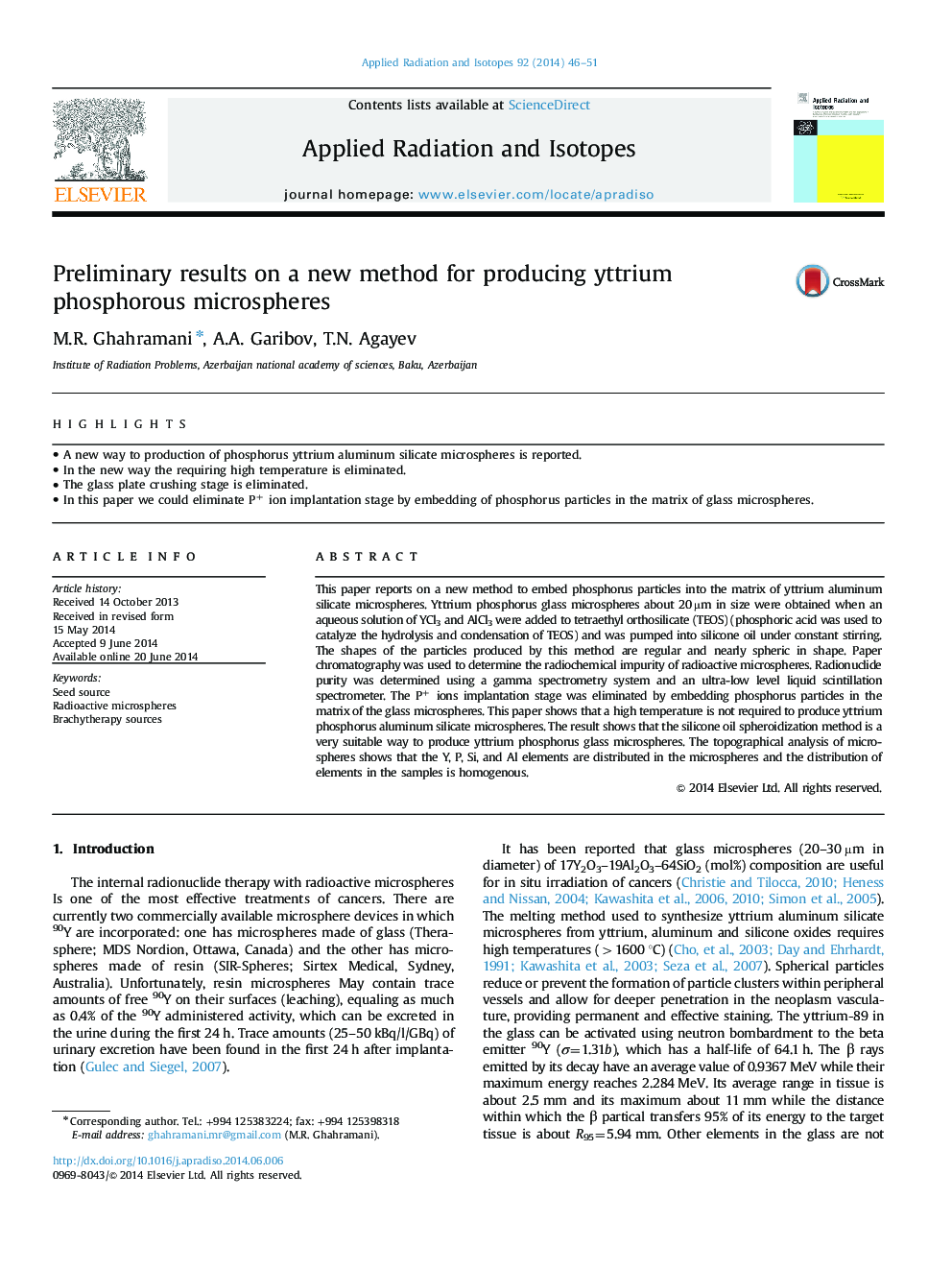| Article ID | Journal | Published Year | Pages | File Type |
|---|---|---|---|---|
| 1877534 | Applied Radiation and Isotopes | 2014 | 6 Pages |
Abstract
This paper reports on a new method to embed phosphorus particles into the matrix of yttrium aluminum silicate microspheres. Yttrium phosphorus glass microspheres about 20 µm in size were obtained when an aqueous solution of YCl3 and AlCl3 were added to tetraethyl orthosilicate (TEOS) (phosphoric acid was used to catalyze the hydrolysis and condensation of TEOS) and was pumped into silicone oil under constant stirring. The shapes of the particles produced by this method are regular and nearly spheric in shape. Paper chromatography was used to determine the radiochemical impurity of radioactive microspheres. Radionuclide purity was determined using a gamma spectrometry system and an ultra-low level liquid scintillation spectrometer. The P+ ions implantation stage was eliminated by embedding phosphorus particles in the matrix of the glass microspheres. This paper shows that a high temperature is not required to produce yttrium phosphorus aluminum silicate microspheres. The result shows that the silicone oil spheroidization method is a very suitable way to produce yttrium phosphorus glass microspheres. The topographical analysis of microspheres shows that the Y, P, Si, and Al elements are distributed in the microspheres and the distribution of elements in the samples is homogenous.
Keywords
Related Topics
Physical Sciences and Engineering
Physics and Astronomy
Radiation
Authors
M.R. Ghahramani, A.A. Garibov, T.N. Agayev,
